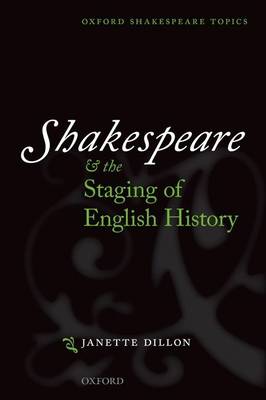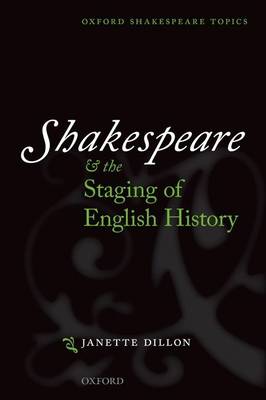
- Retrait gratuit dans votre magasin Club
- 7.000.000 titres dans notre catalogue
- Payer en toute sécurité
- Toujours un magasin près de chez vous
- Retrait gratuit dans votre magasin Club
- 7.000.000 titres dans notre catalogue
- Payer en toute sécurité
- Toujours un magasin près de chez vous
Description
This new study of Shakespeare's English history plays looks at the plays through the lens of early modern staging, focusing on the recurrence of particular stage pictures and 'units of action', and seeking to show how these units function in particular and characteristic ways within the history plays. Through close analysis of stage practice and stage picture, the book builds a profile of the kinds of writing and staging that characterise a Shakespearean history play and that differentiate one history play from another. The first part of the book concentrates primarily on the stage, looking at the 'single' picture or tableau; the use of presenters or choric figures; and the creation of horizontally and vertically divided stage pictures. Later chapters focus more on the body: on how bodies move, gesture, occupy space, and handle objects in particular kinds of scenes. The book concludes by analysing the highly developed use of one crucial stage property, the chair of state, in Shakespeare's last history play, Henry VIII. Students of Shakespeare often express anxiety about how to read a play as a performance text rather than a non-dramatic literary text. This book aims to dispel that anxiety. It offers readers a way of making sense of plays by looking closely at what happens on stage and breaks down scenes into shorter units so that the building blocks of Shakespeare's historical dramaturgy become visible. By studying the unit of action, how it looks and how that look resembles or differs from the look of other units of action, readers will become familiar with a way of reading that may be applied to other plays, both Shakespearean and non-Shakespearean.
Spécifications
Parties prenantes
- Auteur(s) :
- Editeur:
Contenu
- Nombre de pages :
- 160
- Langue:
- Anglais
- Collection :
Caractéristiques
- EAN:
- 9780199593163
- Date de parution :
- 16-05-12
- Format:
- Livre relié
- Format numérique:
- Ongenaaid / garenloos gebonden
- Dimensions :
- 140 mm x 203 mm
- Poids :
- 299 g







